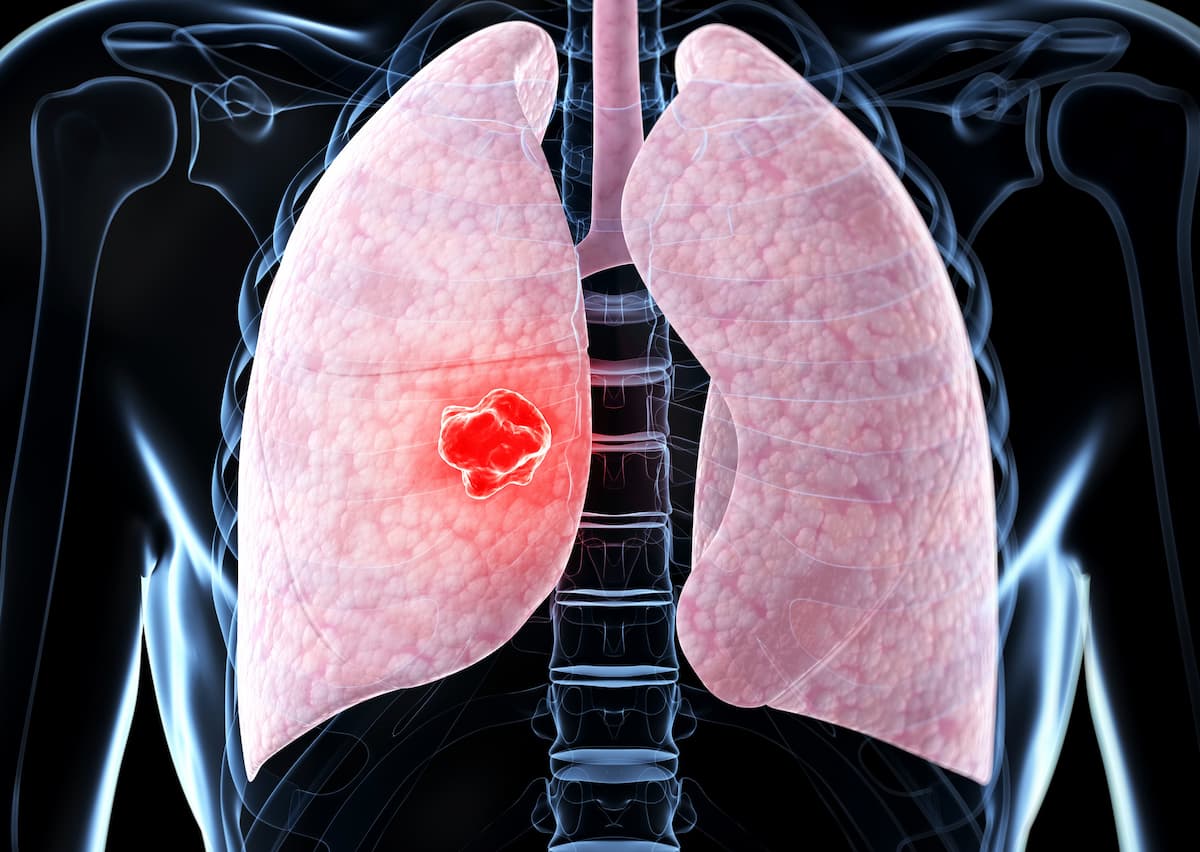Osimertinib/Chemotherapy Attains Japanese Approval in EGFR+ Advanced NSCLC
The approval for osimertinib/chemotherapy by the Japanese Pharmaceuticals and Medical Device Agency was based on results from the phase 3 FLAURA2 trial.
"This approval brings an important new treatment option for this aggressive form of lung cancer, the leading cause of cancer death in Japan," according to Kunihiko Kobayashi, MD, PhD.

Osimertinib (Tagrisso) in combination with pemetrexed and platinum-containing chemotherapy was approved in Japan as a first-line treatment for patients with locally advanced or metastatic EGFR-mutant non-small cell lung cancer (NSCLC) harboring exon 19 deletions or exon 21 (L858R) mutations, according to a press release from the developers, AstraZeneca.1
Approval for the treatment is based on results from the phase 3 FLAURA2 trial (NCT04035486), which showed an 8.8-month extension in median progression-free survival (PFS) with osimertinib plus chemotherapy (25.5 months) vs osimertinib alone (16.7 months; HR, 0.62; 95% CI, 0.49-0.79; P <.001).
“The FLAURA2 results showed osimertinib with the addition of chemotherapy provided a nearly 9-month improvement in [PFS] versus osimertinib monotherapy,” lead trial investigator Kunihiko Kobayashi, MD, PhD, a professor at Saitama Medical University International Medical Center, said in the press release.1 “This approval brings an important new treatment option for this aggressive form of lung cancer, the leading cause of cancer death in Japan.”
According to investigator evaluation, PFS rates for the osimertinib/chemotherapy and osimertinib monotherapy arms were 57% (95% CI, 50%-63%) and 41% (95% CI, 35%-47%) at 24 months, respectively.2 Additionally, the objective response rate (ORR) was 92% (95% CI, 88%-95%) and 83% (95% CI, 78%-87%)
Disease control occurred in 95% (95% CI, 92%-98%) of the combination arm and 94% (95% CI, 90%-96%) of the monotherapy arm per investigator assessment. Median duration of response (DOR) was 24.0 months (95% CI, 20.9-27.8) and 15.3 months (95% CI, 12.7-19.4), respectively. Additionally, continued responses occurred in 80% (95% CI, 74%-84%) and 64% (95% CI, 57%-70%) at 12 months, 69% (95% CI, 62%-75%) and 44% (95% CI, 37%-51%) at 18 months, and 49% (95% CI, 41%-57%) and 35% (27%-42%) at 24 months, respectively, for the combination and monotherapy arms.
Common any-grade and grade 3 adverse events (AEs) occurring in at least 20% of patients of the combination arm included anemia (46%, 20%), diarrhea (43%, 3%), nausea (43%, 1%), decreased appetite (31%, 3%), constipation (29%, less than 1%), rash (28%, less than 1%), fatigue (28%, 3%), vomiting (26%, 1%), stomatitis (25%, less than 1%), and neutropenia (25%, 11%). The safety analysis set included all patients who received at least 1 dose of trial treatment.
The primary end point for the trial was investigator-assessed PFS. Secondary end points included overall survival, ORR, DOR, disease control, depth of response, and second PFS.
Patients were randomly assigned in a 1:1 ratio to receive osimertinib with chemotherapy or osimertinib monotherapy. For the combination arm, patients received 80 mg of osimertinib once daily and intravenous pemetrexed at 500 mg/m2 plus cisplatin at 75 mg/m2 or a guided dose of carboplatin defined as area under the concentration-time curve of 5 mg/mL per minute administered intravenously on day 1 of four 21-day cycles. This treatment was followed by osimertinib at 80 mg once daily plus pemetrexed maintenance therapy at 500 mg/m2 every 3 weeks. Patients in the monotherapy arm received an 80 mg dose of osimertinib once daily.
Inclusion criteria included patients 20 years and older with locally advanced or metastatic NSCLC who had not received previous systemic treatment for advanced disease. Pathological confirmation of nonsquamous NSCLC with local or central confirmation of the EGFR exon 19 deletion or L858R mutation, a World Health Organization performance status score of 0 to 1, presence of central nervous system metastases with a neurologically stable condition, and any radiation or chemoradiation treatment or glucocorticoid therapy having occurred at least 2 weeks before initiation of trial treatment were additional eligibility criteria.
The FDA approved osimertinib/chemotherapy for patients with EGFR-mutant NSCLC in February 2024 based on findings from the FLAURA2 trial.3
References
- Tagrisso with the addition of chemotherapy approved in Japan as new 1st-line treatment for patients with EGFR-mutated advanced lung cancer. News release. AstraZeneca. June 25, 2024. Accessed June 26, 2024. https://tinyurl.com/22cf6rvs
- Planchard D, Jänne A, Cheng Y, et al. Osimertinib with or without chemotherapy in EGFR-mutated advanced NSCLC. N Engl J Med. 2023;389(21):1935-1948. doi: 10.1056/NEJMoa2306434
- FDA approves osimertinib with chemotherapy for EGFR-mutated non-small cell lung cancer. News release. FDA. February 16, 2024. Accessed June 26, 2024. https://bit.ly/49AeXjy